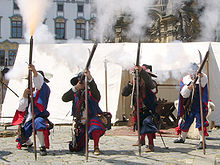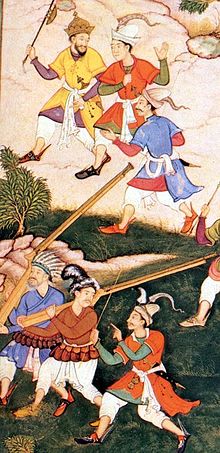So, the King of France known as Louis the 15th retired to the West Indies in the latter part of his reign with his wife. He used Louis the 16th as a placebo to dismiss any suggestions as to the continuation of the royalty. He had children and sent many of them back to France over the years. Apparently, Mozart is one of these children and it is not entirely clear how long Louis 15th lived but much of his decision to leave France was predicated on his thought and belief that he was the King of Israel and the resentment of the rest of Europe was too much to fathom. He eventually went to Israel but returned to the West Indies; Haiti in the 1800's as the story is told and remained settled in a secluded and well fortified part of Haiti for a very long time. It is not entirely clear when he died but his intention was to begin with world peace when he saw the musket and too many of them in people's hands as if they were being given out for free. He also saw what happened when all of the guards had them. There was an accidental shooting of a member of the French royal family. It seems Louis the 14th was the victim of an accidental shooting.
The Musket https://en.wikipedia.org/wiki/Musket
Europe
Gunpowder flask. Carved in relief with
Adam and Eve
on either side of tree of Life. The back is plain, the background is
gilded, the mounts silver gilt. Behind the root of the tree is the
figure of a stag; at the top is a coat of arms with the letters I.Z.W.,
Victoria and Albert Museum
Hand cannons (
handgonnes)
arrived in Europe from Asia sometime in the early 14th century. They
were more commonly used by the early 15th century, particularly in the
Hussite wars.
It is possible that the noise was at least as important as the missile,
for the effect on the horses of the enemy knights. These were very
short ranged, inaccurate and difficult to load and fire. Hand cannons
had a crude handle, or no handle at all. A wooden stock was added,
allowing the weapon to be more easily held and fired. The hand cannon
evolved into the arquebus by the mid 15th century. Early arquebusiers
just held on to the rope match, or attached it to their belt, which was
dangerous since the match could accidentally contact the touch hole as
the arquebusier moved around while loading the weapon in battle.
Asia
Early matchlocks as illustrated in the
Baburnama (16th century)
The
hand cannon was first used in China in the 13th century.
[16]
The hand cannon was a very simple weapon, consisting of a metal tube
enclosed on one end, with a touch hole drilled into the side of it.
Gunpowder and ammunition were placed in the tube, and a match (a short
piece of burning rope) was touched to the touch hole, causing the powder
to explode and the ammunition to be discharged.
Imported arquebuses were
utilized in China during the
Ming Dynasty (1368–1644) and
Qing Dynasty
(1644–1911). The Chinese used the term "bird-gun" to refer to
arquebuses and Turkish arquebuses may have reached China before
Portuguese ones.
[17] In Zhao Shizhen's book of 1598 AD, the
Shenqipu, there were illustrations of
Ottoman Turkish
musketmen with detailed illustrations of their muskets, alongside
European musketeers with detailed illustrations of their muskets.
[18]
There was also illustration and description of how the Chinese had
adopted the Ottoman kneeling position in firing while favoring
European-made muskets.
[19]
The
Mughals introduced arquebuses into
India.
[citation needed] The guns came into wide use by not only the Indian Mughal Empires but also by rival
South Indian kingdoms. The muskets that the Mughals and the rest of India used were often made of the high quality
wootz steel. These Indian muskets were manufactured by the thousands and could even use stones instead of balls if needed.
[citation needed]



No comments:
Post a Comment